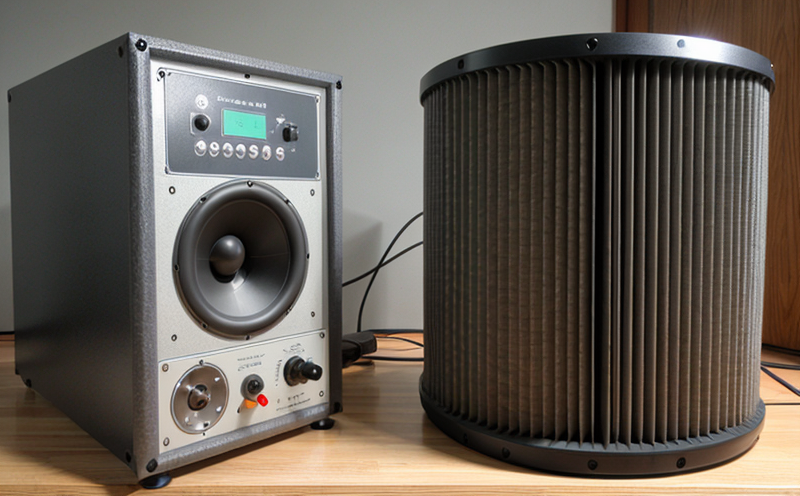ISO 2631-4 Vibration Effects Testing on Crew Health
The ISO 2631-4 standard is a crucial guideline in marine and ship equipment testing, specifically addressing the effects of vibration on crew health. This test ensures that the design and operation of ships and their components do not expose crews to excessive levels of vibration, which can lead to various health issues including musculoskeletal disorders, hearing loss, and cardiovascular problems.
The standard is widely recognized in the maritime industry as a benchmark for ensuring the safety and well-being of shipboard personnel. Compliance with ISO 2631-4 not only protects crew members but also contributes to the overall reliability and longevity of marine equipment. By mitigating vibration-induced stress, this test helps maintain a more comfortable working environment on board ships.
The testing procedure involves measuring the acceleration in three orthogonal directions (X, Y, Z) at specific points on the ship's structure or components. The measurement points are chosen based on where crew members are most likely to be exposed to vibration. The data collected is then analyzed using ISO 2631-4 guidelines to determine whether the exposure levels fall within acceptable limits.
Understanding and implementing this test is essential for quality managers, compliance officers, R&D engineers, and procurement teams involved in ship design and operation. It ensures that the equipment meets not only safety standards but also comfort requirements, which are critical factors in crew retention and overall operational efficiency.
- Compliance with ISO 2631-4: Ensures adherence to international best practices for vibration testing.
- Data Accuracy: Provides precise measurements of vibration levels across the ship's structure.
- Risk Management: Helps identify and mitigate potential health risks associated with excessive vibration exposure.
- Enhanced Comfort: Improves crew comfort, leading to higher morale and productivity.
The importance of this test cannot be overstated. It plays a vital role in the design and operation phases of marine equipment, ensuring that ships are not only safe but also provide a comfortable working environment for their crews.
In summary, ISO 2631-4 Vibration Effects Testing on Crew Health is an indispensable tool for maintaining the safety and well-being of crew members. By adhering to this standard, shipbuilders and operators can ensure that their vessels meet the highest international standards, thereby protecting both the health of personnel and the integrity of equipment.
Why Choose This Test
Selecting ISO 2631-4 Vibration Effects Testing on Crew Health is a strategic decision that offers numerous advantages for ship operators. Firstly, it ensures compliance with international standards, which is essential for maintaining a safe and healthy working environment aboard ships. Secondly, this test provides valuable data that can be used to improve the design and operation of marine equipment, enhancing crew comfort and reducing health risks.
By choosing ISO 2631-4 testing, ship operators demonstrate their commitment to crew welfare and operational excellence. This not only enhances reputation but also supports long-term sustainability by minimizing downtime due to equipment failure or crew illness.
The test results can be used in various ways, such as:
- Identifying areas of high vibration exposure for targeted mitigation measures.
- Guiding design improvements to reduce vibration levels during the manufacturing process.
- Providing evidence of compliance with regulatory requirements and industry best practices.
In conclusion, choosing ISO 2631-4 Vibration Effects Testing on Crew Health is a proactive step towards ensuring crew safety and comfort. It supports operational efficiency while contributing to the overall well-being of shipboard personnel.
Competitive Advantage and Market Impact
In today’s competitive maritime industry, maintaining high standards for crew health and equipment reliability is not only a legal requirement but also a strategic advantage. Ships that comply with ISO 2631-4 are more likely to attract and retain skilled personnel, which is critical in an industry where labor shortages can have significant impacts on operational performance.
Compliance with this standard also enhances the reputation of ship operators, making them more attractive to customers who value safety and sustainability. This can lead to increased market share and better customer relationships. Moreover, it supports a positive brand image that aligns with global trends towards safer working environments and sustainable practices.
The benefits extend beyond just crew health; they also contribute to the longevity of marine equipment by reducing wear and tear caused by excessive vibration. This results in lower maintenance costs and extended operational life for ships, providing long-term cost savings and increased profitability.
In summary, choosing ISO 2631-4 Vibration Effects Testing on Crew Health offers significant competitive advantages. It supports operational excellence, enhances reputation, attracts skilled personnel, reduces maintenance costs, and contributes to sustainable practices. These factors collectively contribute to a stronger market position and better long-term performance for ship operators.





